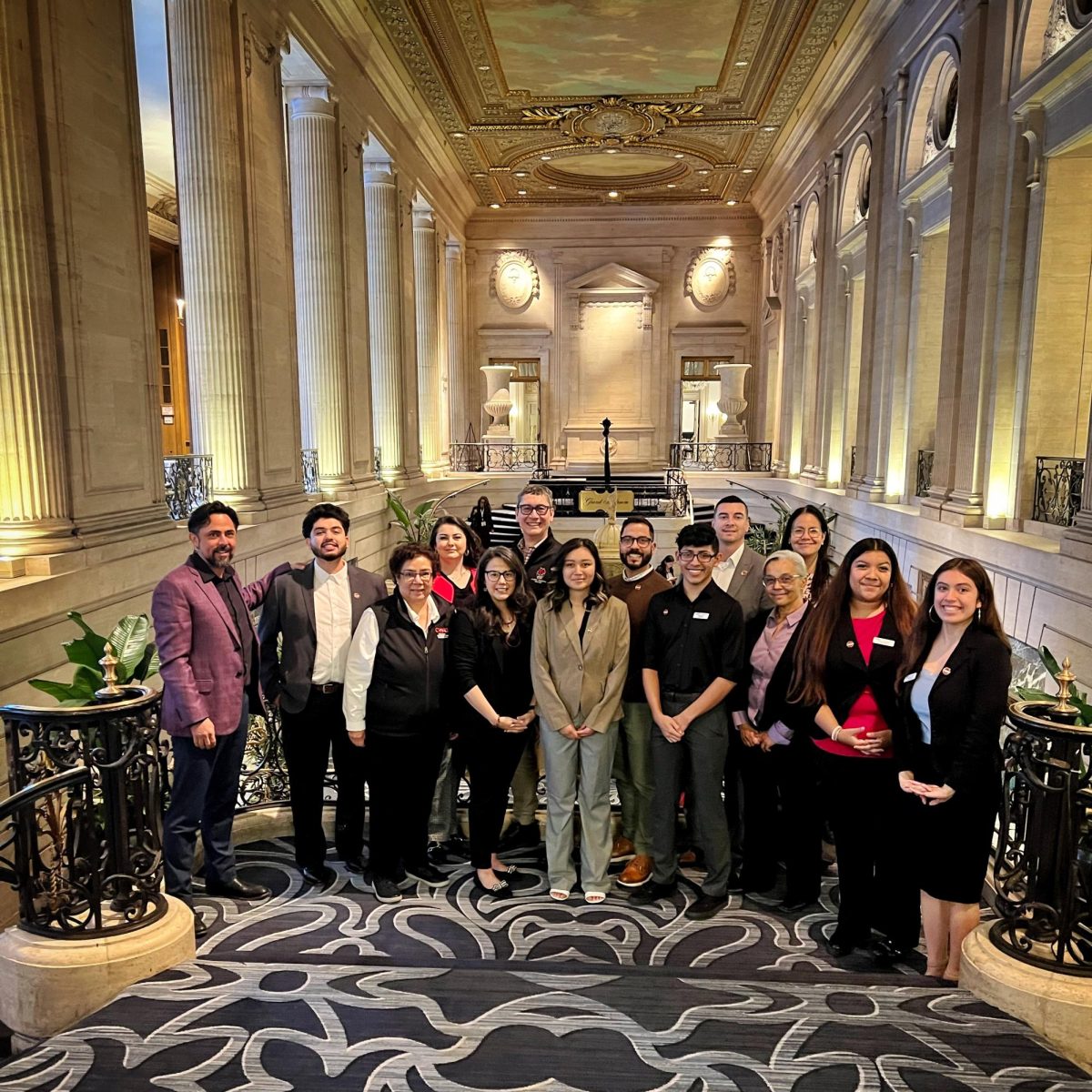BY R. Troy Peterson
Staff Reporter
On April 17, Central’s Museum of Culture and Environment held an opening reception for the museum’s new exhibit, “How Did the Cougar Cross the Road?”
The exhibit highlights the Snoqualmie Pass stretch of Interstate 90 (I-90), which has been undergoing road construction as part of a new conservation project. The project is a cooperative effort between the United States Forest Service, the Washington state Department of Transportation (WSDOT), and Central’s College of Sciences.
The exhibit was designed to be an engaging, interactive experience where people of all ages could come together and learn, according to Mark Auslander, director of the Museum of Culture and Environment. The exhibit itself is centered on a miniature wildlife crossing, which was built by Chris Coski, an employee of Central’s facilities department.
The reception was hosted by Auslander and Associate Dean of the College of Sciences David Darda. Darda called the event a great turnout for the museum here at Central.
The Museum of Culture and Environment is an interdisciplinary approach to deal with the university’s diverse departments, Darda said. He also explained the relationship between Central, WSDOT and the Forest Service.
Darda emphasized the mission of Central, which is produce research which is in the public’s interest.
“And this project does exactly that,” Darda said of the I-90 wildlife project.
According to Darda, Central has had many students go into internships and careers with the Forest Service. Darda said the event also celebrated Central’s cooperation with the Forest Service.
The opening reception featured talks from individuals who had experience with the history of I-90. The talks expanded on the exhibit itself, which covered the history of Snoqualmie Pass as well as the recent wildlife project.
Two of the featured speakers were WSDOT employees Brian White and Jason Smith, who spoke about the technical side of the I-90 wildlife project. Darda said that both White and Smith had visited Central, primarily the College of Sciences to get information for the project.
White explained that while the project does indeed help wildlife populations, it doesn’t end there.
“A lot of people think it’s about avalanches, or they think it’s about wildlife connectivity, or they think it’s about adding lanes, and it’s really about all that,” White said.
White, who helped design the project, said that the first two phases of the I-90 project were completed, and that the WSDOT was working with legislators for funding. He also said construction on the first wildlife overpass crossing was going to begin.
Gold Creek construction, according to White, has already been completed. It allows animals to move underneath the roadway. Smith said one of the goals of the Gold Creek aspect was to reconnect elements of the watershed areas in a 15 mile stretch of highway. The 120 foot bridges are now replaced by two bridges, one 930 feet and a 1,085 feet.
According to White, the project not only focuses on wildlife conservation but also on preventing issues from avalanches. He says it allows avalanches to go underneath the roadways.
Getting a proper understanding on the project was tough for the WSDOT, according to Smith. This lead the involvement of other organizations, including Central.
“We needed to be able to engage a lot of people from different disciplines to be able to completely understand what we were undertaking,” Smith said.
Smith explained that Central’s role in the project was mainly with the low mobility species, including how to get species like pikas to use the overpass and how they would need to be created.
Another featured speaker was Yvonne Prater, author of the book Snoqualmie Pass: From Indian Trial to Interstate. The book was first published in 1981.
Prater explained the development of the Snoqualmie area and focused on the human use of the area. Her talk included rare photographic slides of the history of the area.
Prater praised the good work being done on Snoqualmie Pass by the WSDOT, the Forest Service, and Central.
“I feel honored to be a part of all this,” Prater said of the reception.
Don Whitehouse, the regional director of the south central region of the WSDOT, was impressed by both the reception and the exhibit.
“Great turnout. I thought it was an excellent event,” Whitehouse said.
Caleb Loughran, a Central herpetology graduate student who attended the opening reception, was also impressed.
“I think it’s a terrific exhibit,” Loughran said. “It’s a great way to present a lot of the research that goes on to the public in a very engaging way.”





